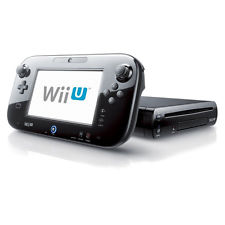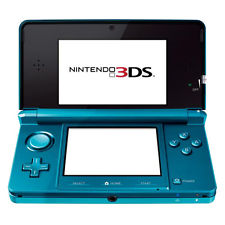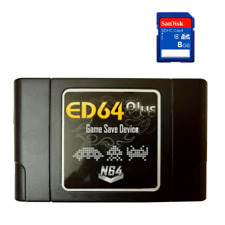|
October 11th, 2005, 23:19 Posted By: wraggster
News From Lik Sang
Release Date / Price Point
While the Xbox 360 and PS3 have unbelievable graphics, and are just bursting at the seams with raw power, if you think about it, the gameplay of titles isn't really much different to that of Xbox and PS2 games. Some people like it like that, but there's a growing number of gamers and non-gamers in search of something fresh. What they search for is the Nintendo Revolution.
No release date other than "2006" has been announced, nor any price points, although Nintendo are aiming for this to be significantly cheaper than their competitors, hoping people will buy the Revolution and a PlayStation 3 or Xbox 360. Nintendo has a long tradition of delaying hardware and releasing last, but then again with the Nintendo DS they beat Sony out the door, so perhaps we'll be surprised.
The Games and Online Functionality
Naturally it's too early to talk much about games, but what we do know is that Nintendo President, Satoru Iwata said how he'd like Mario, Metroid, Zelda and Smash Bros. out on the Revolution as soon as possible. "Personally I am pushing very strongly on Mr. Miyamoto to make Mario one of the launch titles for the Revolution," he said in an interview with G4TV. While these are the same 'old' games we've played on GameCube, and the N64 before that too, remember of course it makes no sense to announce just the names of original titles in development.
While the level of backwards compatibility of PS3 is impressive, and Microsoft is trying, no one beats the big N here. The Revolution will play every single first party Nintendo game, all the way back to the Famicom (NES). There's 221 such games for the NES, SNES, Satellaview (SNES Add-On), N64 and N64: DD. These titles will be stored on 512MB of internal flash memory, which is enough for anywhere between around 50 to over a thousand titles to be stored. Then there's still GameCube to count too, with a library of over 550 games. The Revolution drive accepts your mini GC discs, and hidden under covers on the top of the console are four GameCube controller ports and two memory card slots. These let you use your existing GC controllers, plus the microphone, bongo drums and dance mats.
Games for the previous consoles will be downloadable on Nintendo's "Virtual Console" system, for a yet undecided fee. Despite hopes, the titles will not be free, although Nintendo have said they might run such offers like one free download with a new game purchased. Currently they are talking to third parties to try and get them to publish their past titles for download also. Since it's based on emulation, even titles from former rival Sega may be there. In an interview with Famitsu magazine, Sega's Yuji Naka, head of Sonic Team and Sega's Software R&D said "I hope Sega games will be playable as well." While emulation is nothing new for PC, the chance to play these classics with a real controller, on a TV, how they were meant be played, is nothing short of exciting.
The Controller
The main twist of the Revolution lies in the controller, which was surrounded by so much speculation and rumors across the internet, many wondered if Nintendo could live up to the hype they built. They did though, as while we were all wondering about touch screens and gyroscopes, Nintendo were building a much simpler and original controller. In the rectangle shape of a remote control. Using two small sensors with a range of 10 to 15 feet by your TV, the Revolution will detect your exact position in the room, on all three axes. Even motion sensing arcade machines don't have this sort of technology, but next year you'll have it in the palm of your hands. The controller its self also detects rotation and direction, giving you precise and natural control in every imaginable sense.
On the top corner is an On/Off button, then below that, a d-pad, buttons, then four LED lights to show you which of the four controller "slots" you're using. If you hold it on the side, it's looks like an enhanced NES pad in ceramic white or one of other various colors. On the rear of the controller, there's a large "B" trigger, then the battery compartment. Fixing a common complaint gamers had with Nintendo's previous wireless Wavebird controller too, a rumble feature has been built into this new pad. Meanwhile at the bottom is an expansion slot for peripherals like the "nunchuck controller". This, which won over many of the western developers, is a "pod" giving you an analog-stick to hold in the other hand, with Z1 and Z2 triggers underneath.
Using a modified Metroid Prime 2 engine, this device was shown off as players ran around with the analog-stick while using their other arm to point the main controller where they want to shoot. Since the Dreamcast days, companies have tried putting a d-pad or analog stick on a light gun to give you such freedom, but none even came close to what they aimed for. Now Nintendo have leaped over them and produced a device more natural and precise than a keyboard and mouse!
Even Peter Moore, corporate Vice President of Xbox, said at the Tokyo Game Show "I want to give kudos for Nintendo for its attempt at innovation with the new controller. (It'll) bring people in that, as Iwata-san said, are either lapsed gamers or gamers that are intimidated by the complexity of the controller." To ensure multi-platform and more traditional titles are still playable though, "shells" will be sold, where you just slide the Revolution controller into the shell of a GameCube style pad for example, and feel right at home. Other more original peripheral "shells" may include anything from Maracas for Sega's Samba De Amigo, to a toy model plane for games like Pilotwings.
Technical Specs
What hasn't excited many fans however, is Nintendo's stance on High Definition. While it's nothing new given the companies slow uptake on a CD with the N64, and online gaming with GameCube, the ever growing numbers of those who own a plasma or LCD TV are stunned the Revolution won't support a TV resolution higher than that created back in 1941.
Perrin Kaplan, Nintendo of America's Vice President of Marketing and Corporate Affair, addressed this issue saying "Nintendo doesn't plan for the system to be HD compatible as with that comes a higher price for both the consumer and also the developer creating the game. Will it make the game better to play? With the technology being built into the Revolution, we believe the games will look brilliant and play brilliantly. This can all be done without HD." Later he went on to say "Companies focused on outdoing each other for technology's sake are using the power of public relations to confuse the media into thinking high-definition is a live-or-die part of the games of the future. It is a technological fact that games will still look incredibly beautiful and play incredibly well without the high cost of making them HD compatible. HD may be one of the technologies of the future. Is it the gaming industry's only future? We don't think so."
Exact specs for the machine are still a closely guarded secret, but it's been announced that the machine will be two to three times more powerful than the GameCube. This is a far cry from that of Sony and Microsoft's efforts, but that's what will keep the cost down for Nintendo, game developers, and us the consumers. Hoping the Revolution will be the platform of choice for publishers to give new concepts and original ideas a go, and as loyal PS2 developers are even questioning their rising costs, Nintendo may very well be onto something here.
Not missing out on every mod con however, the Revolution will have an online match making system similar to Xbox Live, can be linked to other consoles or the Nintendo DS via Wi-Fi, and with an add-on, it'll play DVD movies. This is likely to be through a dongle, ala Xbox DVD Playback Kit. Wireless wise, both 802.11b and 802.11g will be supported, or if you don't already have a wireless router, a USB port will be included to accept routers or high speed modems with a USB output. Using wireless, NDS owners will be able to download demos, and then transfer them over to their handheld without so much as getting off the couch, a popular goal in this next generation.
Finally, leaving a few surprises up their sleeves, Nintendo of Europe's Jim Merrick admitted they "have not shared everything that there is to know about Revolution or its controller", and finished with "C'mon, we're Nintendo - we like to hold things until the very end!"
While the next gen console war is just beginning, the battle over the next generation of DVD has already been raging on for years. On one side there's Sony and Philips with Blu Ray, then on the other it's Toshiba and NEC with HD-DVD. It used to be easy to decide who to root for, as Blu Ray offered more space for us consumers, while HD-DVD was cheaper to manufacturer for the corporate movie studios. These days however, it's simply impossible to decide as the two sides sling mud at each other on an almost daily basis, and new announcements of higher capacities are usually just successful experiments created in their labs, and who knows how many years away they are from actually being mass produced. Sometimes new technologies like anti-scratch coating give one side the edge, but then the other quickly adopts the same.
Alliances have been forged and broken down, peace talks attempted and shattered into bits, oh yes, this is real war. Sony are even using the old Trojan Horse strategy by putting the Blu Ray drive in the PS3 to ensure their format is in tens of millions of homes, even though that's probably one of the reasons we're constantly warned about how expensive the PS3 is going to be. Anyone who remembers how much the first DVD players cost will tell you that first generation players for a new format at a reasonable price are simply impossible. Someone has to be losing a lot of money, and that's probably why Sony, by their own admission, will be arguing over the price of the PS3 until the last possible minute.
As you can see already the format war is affecting our videogames. Sony, who outside of the PlayStation has seriously struggled in the past few years, previously lost the Betamax vs VHS wars, then lost again in the creation of the DVD standard we know today. One analyst, Michael Pachter of Wedbush Morgan Securities, said how Sony has "bet the entire future on this", and went on to explain how "it's too important for them to lose, so they will do everything they can to win."
Meanwhile to keep costs down and release the Xbox 360 this year, Microsoft's machine will only play regular DVD discs, as will the Nintendo Revolution. That's not to say Microsoft hasn’t chosen a favorite though. Originally in return for Sony including Microsoft's VC-1 codec in the Blu Ray standard, which had already been adopted by the HD-DVD group, Microsoft was meant to remain neutral.
Then Microsoft laid down some standards of what they demand for the future, in terms of being able to stream movies around the house via Windows Media Center, and several other such details. Recently as movie studios seemed to be siding with Sony because of stronger copy protection, Bill Gates and Intel publicly sided with HD-DVD, stating Blu Ray hadn't lived up to their requirements. Naturally the Blu Ray executives were out raged, and pointed out how they do in fact meet those standards.
No doubt this is a battle that will be fought for a long time to come, but not knowing which side will be the next Laserdisc or VCD, we the consumers are going to lose out. Let's just hope on the videogames side of things, that the finances to fund this war won't come all from our own pockets.
For more information and downloads, click here!
 There are 0 comments - Join In and Discuss Here There are 0 comments - Join In and Discuss Here
|
|
 NES
NES










